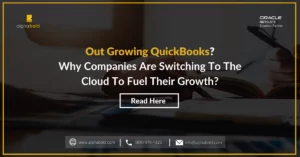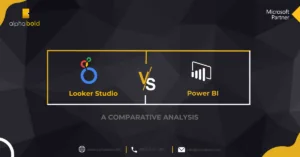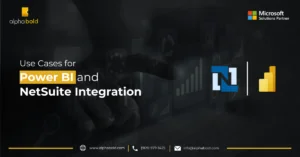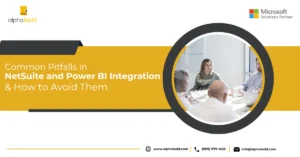Table of Contents
Introduction
NetSuite is a powerful ERP system but above everything it is a business platform that can easily be adjusted to meet any business need. In this article, we will focus our attention on Contract Retainage, a concept common but not limited to Construction Industry. We will demonstrate how NetSuite can handle A/R retainage.
What is Retainage?
How Does It Work?
In a normal scenario, when a contractor earns revenue under an accrual method like CCM (Completed Contract Method) or PCM (Percentage of Completion Method), they will issue an invoice and record this amount as an account receivable (A/R) until the payment is made and the funds are collected. Unfortunately, this method does not apply to retainage.
According to revenue standards, the contractor doesn’t have the right to the retainage portion of an invoice. Therefore, in most cases it cannot be treated as a receivable amount until the contract obligations are fulfilled. Thus, the contractors will keep this amount separately on their books (typically in a separate asset account). Note that some customers may retain these funds for over one year, consequently this may take a serious bite out of contractor’s already narrow profit margins. Therefore, it is important to keep tight control and tracking over the retained assets.
How Retainage in Construction Affects Key Roles & Responsibilities
Retainage in construction affects multiple stakeholders, each facing unique challenges:
- Owners and Clients: Retainage ensures project quality by withholding funds until completion. However, unclear terms or delayed releases can lead to disputes and delays in project closure.
- Contractors: Withheld retainage often represents profit margins, causing cash flow issues and complicating expense management during the project lifecycle.
- Subcontractors: Payment delays downstream can disrupt operations, leading to strained supplier relationships and resource shortages.
- Finance Teams: Managing retainage requires accurate tracking and compliance with regulations. Manual processes heighten the risk of errors, making automation essential.
- Project Managers: Retainage demands milestone tracking and stakeholder coordination to meet contract terms and expedite fund release.
Effective retainage management is critical for construction projects, and NetSuite’s tools help streamline these processes, ensuring compliance and efficiency.
What Are the Limitations of Retainage?
While retainage serves as an important safeguard for project owners, it also introduces several challenges that can impact contractors, subcontractors, and other stakeholders:
- Financial Strain: Retainage often creates cash flow issues, particularly for subcontractors and suppliers. Subcontractors involved in earlier project phases may experience significant delays in payment, as retainage is only released upon project completion. This can hinder their ability to manage ongoing expenses, such as labor and materials, and create a ripple effect throughout the supply chain.
- Risk of Misuse: Retainage practices can sometimes be exploited. For instance, contractors may withhold a higher percentage from subcontractors than what is retained by the owner, or they may delay payments until the last possible moment. In some cases, disputes over what constitutes project completion further prolong the release of funds, adding to financial uncertainty for smaller players in the construction process.
- Compliance Complexities: Regulations around retainage vary widely by state and project type (public vs. private). Contractors working in multiple regions must navigate differing requirements, which can lead to administrative burdens and compliance risks if not managed effectively.
Overcome Retainage Limitations with Expert Guidance
Facing challenges with retainage management in your construction projects? Learn how to simplify workflows, enhance compliance, and streamline payment tracking with tailored solutions. Take control of your retainage processes and minimize errors with AlphaBOLD's expert guidance today!
Get Expert HelpThe Role of Software in Retainage Management
Efficient processes are vital in the construction industry, especially when it comes to managing retainage. Advanced financial management tools, like NetSuite, simplify the complexities of retainage by automating workflows such as invoicing, payment tracking, and compliance monitoring. With features like custom retainage line items and saved searches, contractors can streamline accounts receivable and payable retainage processes, ensuring accuracy and reducing manual effort.
By standardizing forms and automating reminders for retainage release dates, software helps contractors avoid errors, pay subcontractors promptly, and maintain regulatory compliance. This level of efficiency not only reduces risk but also allows teams to focus on delivering quality work and meeting client expectations.
Handling in NetSuite
For practical purposes we will assume that the goal here is to separate regular A/R from Retainage A/R. Also, we will not issue the Retainage Invoice until the date when contractor’s obligations are met, and the customer is willing to release the retained funds.
When the Contractor is generating a Sales Order or an Invoice, it is helpful to stipulate the Retention fees that the customer will retain and not pay until the inspections are completed and the contract is finalized.
Simplify Retainage Management in NetSuite Today!
Struggling to manage contract retainage in NetSuite effectively? Discover step-by-step solutions to streamline your invoicing and retainage workflows. Stay on top of your retained funds, automate manual processes, and reduce errors with our comprehensive guide
Request a ConsultationHow to Manage Retainage in NetSuite Using Non-posting Discount Items:
- We create a non-posting discount item in NetSuite. We can set the % of retainage directly on the item record. Note, the non-posting discount will help us reduce the A/R by the retention percentage.
- On the Invoice issued to the customer we will add the subtotal line and underneath we will apply the retention item.
- As seen in the image above, the system will reduce the Invoice amount by the ‘Retention’ percentage on the retention line. The user will set the date when the retainage is to be Invoiced, by which time all contractual obligations should be met (Retainage Invoice Date is a custom line field).
- This Retainage Invoice Date can be used to create a Saved Search that we can quickly turn into a reminder.
- This helps the A/R team stay on top of any retained funds and generated Retainage Invoices when needed.
- Note, we created a simple workflow that will show the [Invoice Retainage] button only if the retainage was not invoiced and the ‘Retainage Invoice Date’ is the past.
- When you click on the button, a new Invoice transaction will pop-up.
- Notice, all fields (highlighted fields) linking to the original customer and the original invoice are pre-populated. The only portion that must be populated by the user is the Items tab.
- The user will add the ‘Contract Retainage’ item and the amount that equals to the funds retained on the original Invoice.
- After saving the Retainage Invoice, the user will go to the original invoice and make sure that the retention line is flagged as ‘Retainage Invoiced’.
- After this change on the original Invoice, the reminder will be updated automatically.
- Note, the last two steps can be automated to avoid any potential errors.
You may also like: Top Business Intelligence Tools for NetSuite Users
Accounting Considerations
In the example that we walked you through above, we configured the ‘Contract Retainage’ item (which was added to the Retainage Invoice) to produce the following GL impact:
Depending on the company’s accounting policies we can do the following:
- Use a separate A/R account to track ‘Retainage’ aging.
- For each accounting period generate a reversing Journal Entry that will move our total retained funds into a special (other current asset) account. The reversal will ensure that whatever retainage was invoiced no longer appears in our special asset account. This practice is useful when company wants to show retained funds on their books especially if the contracts are executed over a prolonged period of time.
Note, a simple report (similar to the reminder shown above) can be created to show the amount that must be booked via a Journal Entry.
Ready to Automate Retainage Workflows in NetSuite
Optimize your processes and ensure accuracy in handling contract retainage. AlphaBOLD experts streamline your NetSuite operations for maximum efficiency.
Request a ConsultationFinal Thoughts
In conclusion, we demonstrated a semi-automated way of handling retainage in NetSuite. This process can be further enhanced and automated if your organization has other unique needs or large volume of transactions. In any case, we hope that we gave you some direction and ideas on how to deal with this common occurrence in the construction realm. Also, don’t hesitate to reach out to us if you have any questions or suggestions on an alternative approach to retainage.
Explore Recent Blog Posts









What kind of action did you use to generate the new invoice?
Hi @Hector,
I used ‘Go to record’ action in ‘edit’ mode. Let me know if you have any other questions.
Was the form linked to the original invoice, was it done via client script or was the invoice number pulled in via the workflow? How was it accomplished? Thanks in advance!
Hi Hector,
No, I did not use any scripting. Take a look at this screenshot: http://bit.ly/2YHZ1bP
How we can edit the custom column created as (Invoiced YES / NO) if the original invoice is in closed period?
will this be possible using workflow as Edit Button will not be available in case the period closed?
Hello Fahad,
Unfortunately, you will not be able to edit the Invoice that is in the closed period.